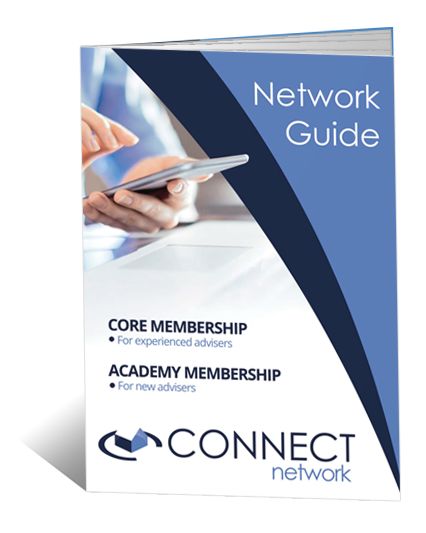A second-charge mortgage is a secured loan that allows homeowners to borrow money using the equity in their property. It is separate from the primary mortgage and allows access to additional funds without remortgaging. This can be a flexible financing option for many, particularly if remortgaging would lead to penalties or higher interest rates.
What Is a Second-Charge Mortgage?
A second-charge mortgage is secured against the equity built up in your property. Equity refers to the difference between your home’s value and the outstanding balance on your primary mortgage. Since this type of loan is secured, lenders consider the property as collateral. As a result, failure to repay may lead to repossession.
Unlike remortgaging, which replaces your existing mortgage, a second-charge mortgage runs alongside it. This means borrowers must manage two separate loans. Many people use this option to fund home improvements, consolidate debts, or cover other large expenses without disturbing their current mortgage terms.
Who Can Apply for a Second-Charge Mortgage?
To qualify, you must already own a property with sufficient equity. Homeowners do not need to reside in the property, as second-charge mortgages can also apply to second homes or buy-to-let properties. To calculate equity, subtract your current mortgage balance from your property’s value.
For example, if your home is worth £300,000 and you owe £100,000, your equity is £200,000. Before approval, lenders will assess affordability based on credit score, income, existing debts, and outgoings. Additionally, your first mortgage provider must grant permission for the second charge.
Why Should You Consider a Second Charge Mortgage?
A second-charge mortgage may be an effective way to access additional funds. It is beneficial if securing an unsecured loan proves challenging or if available amounts fail to meet your requirements.
Obtaining a secured loan can sometimes be more accessible if you meet specific criteria. For example, it would be ideal if you:
- Are self-employed and need flexible lending options.
- Have a poor credit history, making traditional loans harder to secure.
- Possess a high debt-to-income ratio, impacting affordability assessments.
- Require a larger loan amount than standard personal loans allow.
Comparing Second Charge Mortgages to Remortgaging
Many borrowers consider releasing equity by remortgaging their first mortgage. However, this approach may lead to higher costs or less favourable terms. For instance, remortgaging can involve losing a competitive interest rate or paying early repayment charges.
In contrast, a second-charge mortgage allows you to retain your current mortgage terms. This option can help you avoid unnecessary fees while accessing additional funds without restructuring your primary loan agreement.
Costs and Interest Rates
Interest rates for second-charge mortgages tend to be higher than those for first mortgages. This is because, in the event of repossession, the first lender gets priority over repayments. Consequently, the second lender assumes more risk.
Second-charge mortgages are cheaper than unsecured loans or credit cards despite higher rates. However, borrowers should carefully evaluate overall costs, including application fees, valuations, and legal checks. Consulting a mortgage broker can provide clarity on potential expenses.
Benefits of a Second-Charge Mortgage
One key advantage of a second-charge mortgage is retaining your existing mortgage deal. This is especially useful if interest rates have risen or your credit score has dropped. Keeping your current deal could save money over time while avoiding the need to refinance.
You can avoid early repayment charges and penalties linked to remortgaging. Many lenders impose early fees for exiting fixed-term deals, but a second-charge mortgage sidesteps these costs. Consequently, this option provides financial flexibility without disrupting your primary mortgage.
Another benefit is that you are not required to extend your current mortgage term. Extending terms often means paying more interest over time, so preserving your existing agreement can prove financially sensible.
Secured loans are also more accessible than unsecured personal loans. This is particularly true for self-employed individuals who may face stricter lending criteria. Lenders tend to view secured loans as less risky because they are backed by property.
Furthermore, second-charge mortgages may offer larger borrowing limits compared to unsecured loans. Borrowers can tap into their home’s equity for higher loan amounts, which are useful for significant expenses, such as home improvements or debt consolidation.
Disadvantages to Consider
Falling behind on repayments could result in losing your home. Therefore, these loans may not suit those facing financial difficulties.
Additionally, moving house requires repaying both mortgages in full. Consequently, this might leave you with a smaller deposit for your next property.
Interest rates on second-charge mortgages are usually higher than those on primary mortgages. For this reason, some borrowers may find remortgaging a more affordable option.
While second-charge mortgages can offer certain advantages, they also carry potential risks. Borrowers struggling to manage repayments could face financial distress and possibly property repossession.
Managing two separate loans may complicate household budgets. Moreover, repaying both loans when relocating can strain finances and reduce future property deposits.
Higher interest rates often make these loans more expensive overall. As a result, a thorough comparison with alternative products, such as remortgaging, is highly recommended.
What Happens If I Move House?
When moving house with a second charge mortgage, you may need to repay it before purchasing another property. However, some lenders might permit transferring the loan to your new home. Yet, this option is not always available, so confirm details during the application process.
Repaying the second charge mortgage can affect your deposit for the next property. Consequently, a smaller deposit may require borrowing a higher amount. This could lead to increased monthly repayments, impacting your overall budget.
Reviewing the terms of your existing loan and speaking with your mortgage advisor is essential. Doing so ensures you understand the financial implications and repayment options. Additionally, comparing products from different lenders might reveal solutions tailored to your circumstances.
In some cases, paying off the second charge mortgage early may result in penalties. Therefore, check your agreement for early repayment charges to avoid unexpected costs. Discussing your plans with your lender helps clarify terms and potential fees.
If transferring the loan is an option, assess whether the new property meets the lender’s criteria. Property value, location, and condition can influence approval, so gather all necessary information before proceeding.
Planning ahead provides clarity and reduces financial stress during the move. Understanding your obligations allows you to make informed decisions, ensuring smooth transitions between properties.
How to Apply for a Second-Charge Mortgage
Applying for a second-charge mortgage involves demonstrating equity, financial stability, and the ability to repay. Lenders will request proof of income, credit reports, and expenditure details. Approval from the existing mortgage provider is also mandatory.
For tailored advice, speaking to a mortgage broker can help you determine whether this is the right solution. Advisors, such as Fluent, can offer insights into products suited to your needs and assist with applications.
A second-charge mortgage can be an effective way to access additional funds without altering your main mortgage. However, it’s vital to weigh the pros and cons before proceeding. With careful planning and professional advice, homeowners can determine if this option aligns with their financial goals.
Thank you for reading our “Understanding Second-Charge Mortgages | Connect Expert Guide. ” Stay “Connect“-ed for more updates soon!




